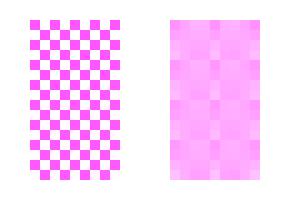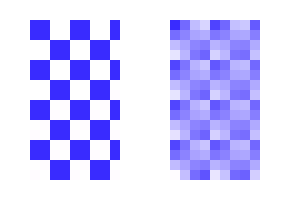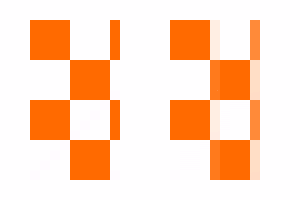After spending months refusing to be honest with developers about the specs for the Z3, it has finally been revealed that the phone has a 540×960 resolution. For developers the phone presents itself as 720×1280 device and then downscales the content to 75% of the size, which is exactly what I predicted two months ago.
While BlackBerry claims that this will work flawlessly and magically, that is not exactly the case. Downscalling content such as this has some issues, mainly that any UI elements that are only a single pixel wide have a one in four chance of disappearing completely. Scaling can work, but it is best when you are scaling up and are doing so by a power of two. This is why iOS devices doubled their horizontal and vertical resolutions when they switched to a higher res format.
In fact, any element with a size less than 4 pixels has the possibility of looking to be a bit off. The images below show the result of scaling a 1×1 pixel grid (in pink), a 2×2 pixel grid (in blue), and a 4×4 pixel grid (in orange).
Grids are kindof a worst case scenario, so most apps actually won’t look too bad. But nothing is going to look great.
What is worse is that the device really believes itself to be a different resolution than it is. As such developers have no simulator, and screenshots are the same 720×1280 resolution that the Z30 produces. This also implies that all text (which is full of the thin strokes that are susceptible to issues) also goes through this identical scaling process.
At $190 the BlackBerry Z3 is not significantly cheaper than the Z10, so there is no reason that this should be your smartphone of choice. Pay a little extra and get something better.


